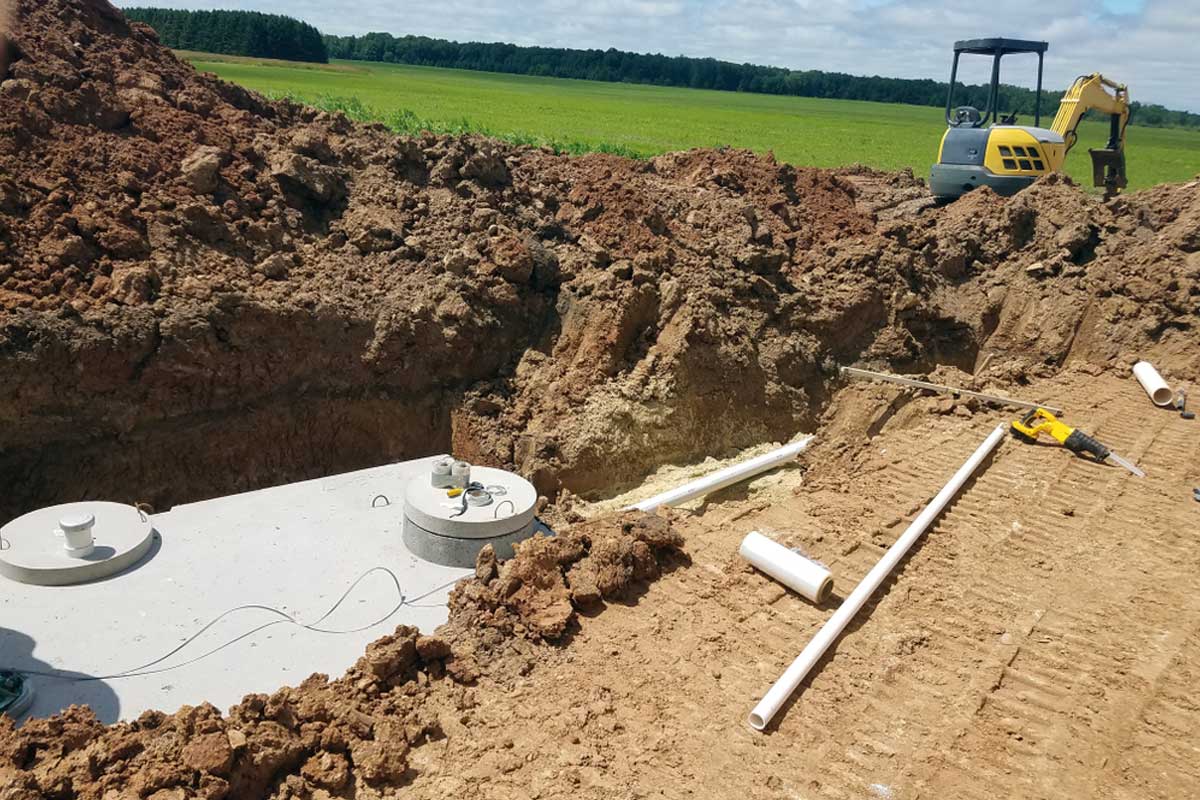In the case of homeownership, certain aspects tend to be hidden from to view until they need attention. One of the most important, yet overlooked component of a home is the septic system. We often ignore it and assume that it can perform its duties without any concern or care. Septic tanks, like all systems, have a limited life span and need to be replaced over time.

Unprepared homeowners may struggle to cover the expense of a new septic system. The total price is determined by numerous variables, and it’s essential to prepare a budget for the replacement system.
Understanding the true septic system cost to replace the tank requires considering many factors that go beyond the apparent price tag. It’s not merely a matter of removing the old tank and installing the new one. In fact, many components and services make up the overall expense. From getting permits and employing professionals to excavation and installation, each process has its own costs that homeowners need to be aware of to plan their budgets effectively.
One of the primary factors to consider is the septic tank replacement cost itself, including the cost to install septic tank and leach field. The price of a new tank will vary based on the size and materials of the tank as well as the level of complexity of the installation. Costs can also be affected by the site of the property, local laws, and soil conditions. Consult with experts from septic systems who will assess your requirements and provide you with an accurate estimate. They’ll also think about the size and design the leach field, to give you a full comprehension of the amount your project is going to cost.
Aside from the tank itself an additional major cost is the leach field or drainfield. It is essential for the treatment and distribution of wastewater. Replacing a damaged or failing leach field is a meticulous process and can significantly impact the total cost of replacing septic. When calculating the total price, it’s important to account for things like the size and composition of leach fields, accessibility, and soil composition.
The cost of a brand new septic system can be not only monetary, but intangible. The process could disrupt your routine, requiring that you temporarily leave your home or limit your water usage while the installation is being done. It is important to consider the inconveniences that could arise during your project, since they could impact your daily routine and cause additional costs such as accommodations or adjustments to your routine.
It is important to be aware the need for proper maintenance and care of septic systems are essential to prolong their life and decrease the chance of premature replacement. Neglecting to perform routine maintenance will result in more severe issues in the future, including damage to drainfields, or even tank failure. The inclusion of septic system maintenance expenses into your budget is an intelligent investment that will save you cash in the end.
By now, you may have realized that determining the septic replacement cost is not a straightforward task. It is a careful analysis of several factors, from the size and material of the tank to the difficulty of the installation and condition of the leach field. Your location as well as local regulations will also have an impact on the total cost. To calculate accurately the expense, it’s important to consult with professionals experienced in septic system replacement.
You may be surprised when you replace the septic tank, only to find that there are extra costs you didn’t expect. It’s essential to understand the hidden costs prior to making your decision.
Some of the hidden expenses of septic system replacement include:
The cost of permits and inspections. Before you can begin working on replacing your Septic tank, it is important to need to get permits from the local authorities. These permits may be costly and you may need to pay additional for inspections.
The cost of excavation and removal. Before the new system can installed, it is necessary to dismantle and remove the existing system. This could be an extremely expensive undertaking, especially if it is difficult for the user to access the previous system.
Cost of backfilling, Grading. Once the old system has been removed, the void must be refilled and graded. This will ensure that your new system drains in the correct way.
Cost of landscaping. You might have to landscape the area after the installation of the new system, to maintain it in a neat and tidy manner. It can be costly particularly if you have to employ a professional landscaping company.
It’s crucial to take into account these hidden expenses when you’re planning the replacement of your septic system. If you do this, you can stay clear of any unexpected costs down the road.
These eco-friendly options are a great option for budget-conscious homeowners. They are cost-effective and environmentally friendly, as they reduce water pollution and limit runoff. Eco-friendly septic systems are also becoming more affordable and accessible and are a great option for anyone who wants to minimize the impact on the environment of their house without going broke. Switching to a greener solution may involve some initial cost, but these can be easily offset by the benefits in the long run. Going green isn’t merely a trend; it’s an essential change in lifestyle that anyone ought to consider embracing if truly passionate about preserving our planet for generations to in the future. It gives you peace of mind that you are helping the global community. This will also ensure that your property is operating effectively, with less work and lower monthly costs.